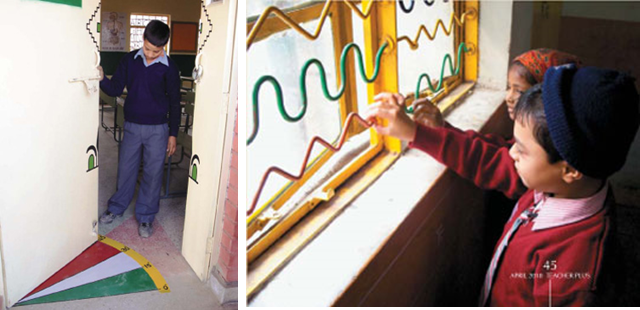
Overview
This educational infrastructure program transforms the architectural elements of schools into assets for playful learning resources. The intervention increases the opportunities of learning though built environment resources, improving pupil and teacher motivation and engagement with the learning environment.
Location:
India
Organisation:
VINYÃS Centre for Architectural Research & Design
Partner organisations:
UNICEF
Beneficiary:
Students, Caregivers
Scale of proximity:
Neighbourhood
Built environment component:
Public space, Street
Design insights
Spatial/physical:
Ordinary elements of infrastructures (i.e., school buildings, windows, doors and stairs) can be given a second stimulation or educational purpose.
Visual/aesthetic:
A balance between spaces being loaded with stimuli yet not oversaturated.
Process:
Flexible, open-ended design approach allows for easy replication in other schools and scaling up.
Technology:
Low tech approach with low-cost interventions on already existing educational infrastructures can achieve the desired impact.
Implementation insights
Targeting the needs and demands of both students and teachers makes the same intervention design twice as effective.
Piloting and later getting support from governments and international agencies, can contribute to an effective scale up process.